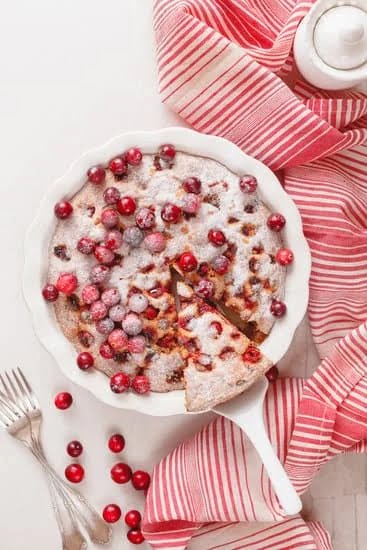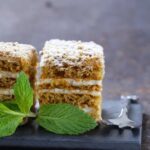FondaBt is a type of icing that has gained immense popularity in the world of cake decorating. This pliable and smooth fondant allows decorators to create stunning and intricate designs on their cakes, making it a preferred choice for many. The use of FondaBt offers endless possibilities for creativity, allowing decorators to craft elaborate designs like never before.
FondaBt is made from sugar, water, and flavorings, giving it a sweet and delicious taste that compliments any cake it adorns. One of the main reasons for its popularity is its ability to provide a flawless finish to cakes, as it can be rolled out thin enough to achieve a smooth and professional-looking surface. This makes it perfect for special occasions like weddings or birthdays where the appearance of the cake is just as important as its taste.
What sets FondaBt apart from other types of icings is its versatility. It can be shaped, molded, and sculpted into virtually any design imaginable. Whether you’re looking to create delicate flowers or sleek modern patterns, FondaBt provides decorators with the artistic freedom they desire.
In this article, we will explore the basics of cake decorating with FondaBt, including essential tools needed, step-by-step guides on application techniques, troubleshooting common issues that may arise when working with FondaBt, showcasing various cake designs that can be achieved using this medium, and exploring advanced techniques for those looking to take their skills to the next level.
So grab your spatulas and rolling pins because we are about to embark on a sweet journey filled with endless creative possibilities.
Essential Tools
Spatulas
One of the essential tools needed for cake decorating with fondant is a set of spatulas. These come in different sizes and shapes to help you achieve smooth and precise finishes on your cakes. A small offset spatula is perfect for applying buttercream or ganache as a base layer before applying the fondant. A larger offset spatula, on the other hand, is ideal for lifting and positioning the rolled-out fondant onto the cake.
Fondant Smoother
A fondant smoother is another must-have tool for cake decorating with fondant. This flat, rectangular tool allows you to smooth and shape the fondant evenly over the cake’s surface, creating a polished and professional finish. It helps eliminate any air bubbles or wrinkles that may appear while working with the fondant.
Fondant Rolling Pin
A specialized rolling pin for fondant is vital for achieving the desired thickness and consistency when rolling out your fondant. Unlike traditional wooden rolling pins, a fondant rolling pin is typically made of non-stick material like plastic or silicone, making it easier to handle and preventing sticking.
Fondant Cutters
Fondant cutters come in various shapes and sizes and are used to create intricate designs and decorations for your cakes. They can be simple circle cutters for creating polka dots or more elaborate cutters for crafting flowers, leaves, or other themed shapes. Investing in a set of versatile cutters will allow you to experiment with different designs.
Embossing Tools
These tools are used to add texture and detail to your fondant creations. They come in various patterns, such as lace, diamonds, or swirls, allowing you to customize your cake’s design even further. Embossing tools are an excellent way to add dimension and visual interest to your fondant decorations.
In addition to these essential tools, it is also helpful to have a fondant mat or workboard for rolling out the fondant, a sharp knife or craft scalpel for trimming excess fondant, and some powdered sugar or cornstarch for dusting the surface while working with the fondant. With these basic tools in hand, you’ll be ready to dive into the world of cake decorating with fondant and unleash your creativity.
Step-by-Step Guide
To achieve a flawless and professional-looking fondant cake, it is important to properly prepare the cake before applying the fondant. This step-by-step guide will walk you through the process of getting your cake ready for fondant application, including tips on leveling, crumb coating, and refrigeration.
The first step in preparing your cake is to level it. Using a serrated knife or a cake leveler, carefully trim off any uneven or domed tops of the cake layers. This will ensure that your finished cake has a smooth and even surface.
Next, it is important to crumb coat your cake. Crumb coating is the process of applying a thin layer of frosting all over the cake to seal in any loose crumbs and provide a stable base for the fondant. Start by covering the top and sides of the cake with a thin layer of buttercream or ganache using an offset spatula or a bench scraper. Smooth out any excess icing and make sure that the entire surface is evenly coated.
After crumb coating, it is recommended to refrigerate the cake for at least 30 minutes or until the icing is firm to touch. Chilling the cake helps to set the icing and prevent it from melting or shifting when you cover it with fondant later on.
Once your crumb-coated cake has been chilled, you are ready to start applying the fondant. Roll out your fondant on a clean and lightly dusted surface using a fondant rolling pin. Make sure to roll it out evenly to achieve a consistent thickness throughout.
Using your rolling pin as support, gently lift and drape the rolled-out fondant over the chilled cake. Smooth out any air bubbles or wrinkles by starting from the center and working your way towards the edges using a fondant smoother or your hands.
By following these steps of leveling, crumb coating, and refrigeration, you will have a solid foundation for applying fondant to your cake. This will not only make the fondant application process easier but also ensure a professional and visually appealing finish.
| Tools | Description |
|---|---|
| Serrated knife or cake leveler | To level the cake by trimming off any uneven or domed tops. |
| Offset spatula or bench scraper | To apply a thin layer of frosting for crumb coating. |
| Fondant rolling pin | A specialized rolling pin for rolling out fondant evenly. |
| Fondant smoother | To smooth out air bubbles and wrinkles on the fondant surface. |
Working with Fondant
When it comes to working with fondant, proper techniques are crucial to achieving a smooth and professional-looking finish on your cakes. Whether you’re a beginner or an experienced cake decorator, mastering the art of handling fondant is essential. In this section, we will explore various techniques and provide helpful tips on working with FondaBt to create stunning cake designs.
One of the first steps in working with fondant is kneading it properly. Kneading helps to warm up the fondant and make it more pliable for shaping. Start by dusting your work surface with powdered sugar or cornstarch to prevent sticking. Next, take a small amount of fondant in your hands and begin kneading it gently. Gradually increase the pressure as you continue kneading until the fondant becomes soft and elastic.
Coloring fondant allows for endless creative possibilities. It is important to use gel food coloring rather than liquid food coloring as liquid food coloring can alter the consistency of the fondant. Start by adding a small amount of gel food coloring using a toothpick or a clean paintbrush.
Remember that a little goes a long way, so start with less color than you think you need and gradually add more if desired. Once color is added, knead the fondant again until the color is evenly distributed.
Rolling out fondant evenly is key for achieving a smooth finish on your cakes. Begin by lightly dusting your work surface and rolling pin with powdered sugar or cornstarch to prevent sticking. Flatten the colored (or white) fondant into a disc shape with your hands before placing it onto the work surface.
In order to achieve even thickness, it’s helpful to use rolling pin guide rings or spacers that attach to each end of your rolling pin. These rings or spacers will ensure that your fondant is consistently rolled out to the desired thickness.
| Technique/Tips | Description |
|---|---|
| Kneading fondant | Properly warm up and soften the fondant by gradually increasing pressure while kneading. |
| Coloring fondant | Use gel food coloring in small amounts, gradually adding more if desired. Knead until color is evenly distributed. |
| Rolling out fondant evenly | Dust work surface and rolling pin with powdered sugar/cornstarch. Use guide rings/spacers for consistent thickness. |
By mastering these techniques and implementing these tips, you will be well on your way to creating beautiful and professional-looking cake designs using FondaBt. Remember to practice and experiment with different tools and methods to discover your unique style and create stunning edible works of art.
Fondant Cake Designs
Cake decorating with fondant offers a wide range of creative possibilities, allowing bakers to design cakes with smooth finishes, intricate details, and unique textures. Whether you are a beginner or an experienced baker, fondant can be used to achieve various cake designs that are sure to impress. In this section, we will showcase some popular cake designs that can be achieved using fondant.
Smooth Finish:
One of the most classic designs achieved with fondant is a smooth finish. This clean and polished look is perfect for elegant wedding cakes or any other formal occasion. To achieve a smooth finish, it is important to start with a perfectly crumb-coated cake.
Roll out a thin layer of fondant and gently drape it over the cake. Smooth out any wrinkles or air bubbles using a fondant smoother, working from the top down. Trim off any excess fondant at the base for a neat finish.
Ruffles:
For a romantic and feminine touch, ruffles made from fondant can add texture and dimension to your cake design. To create ruffles, roll out thin strips of fondant and frill the edges either by hand or using tools like frilling sticks. Attach the ruffled fondant strips in layers around the cake using edible glue or water. Gradually build up the layers, allowing each one to dry slightly before adding the next for stability.
Bows:
A bow gives an elegant and sophisticated look to any cake design. To create a fondant bow, roll out two long rectangular strips of equal length and width. Fold one strip into loops, securing them at the center with edible glue or water. Take the second strip and wrap it around the center where the loops meet to create the knot of the bow. Allow it to dry slightly before attaching it to the cake with edible glue.
Textured Effects:
Fondant also offers endless possibilities for creating textured effects on cakes. From quilted patterns to woodgrain texture, there are various tools and techniques that can be used. To create a quilted effect, use a quilting pin or wheel to create even rows of diamond shapes on the fondant-covered cake. For a woodgrain effect, use a textured rolling pin to roll over the fondant, creating realistic wood grain lines.
These are just a few examples of the cake designs that can be achieved using fondant. The versatility and flexibility of this medium allow for endless creativity and experimentation. With practice and some basic techniques, you can create stunning and personalized cake designs that will leave everyone in awe. So don’t hesitate to explore and have fun with fondant.
Troubleshooting
Troubleshooting: Common issues encountered while working with Fondant and how to troubleshoot them, such as cracked fondant, air bubbles, or sticking.
Working with fondant can be a fun and rewarding experience, but like any other form of cake decorating, it comes with its share of challenges. Here are some common issues that you may encounter when working with fondant and tips on how to troubleshoot them:
- Cracked Fondant: One of the most frustrating problems you can face is cracked fondant. This can happen if the fondant is rolled too thin or if it dries out quickly.
To prevent cracking, make sure you roll the fondant to an even thickness and avoid stretching it too much when covering the cake. If cracks do appear, you can try gently smoothing them out with a small amount of shortening or water using your fingers or a fondant smoother. - Air Bubbles: Another common issue while working with fondant is the formation of air bubbles beneath the surface. These bubbles can create an uneven appearance on your cake. To avoid this problem, it’s important to knead the fondant thoroughly before rolling it out to remove any trapped air pockets. When applying the fondant to the cake, start from one end and slowly smooth it down while gently pushing out any air bubbles that may form.
- Sticking: Fondant sticking to your work surface or tools can be another frustrating problem. To prevent this issue, dust your work surface and rolling pin lightly with powdered sugar or cornstarch before rolling out the fondant. You can also use a silicone mat for added convenience and ease in handling the fondant without sticking.
By being aware of these troubleshooting techniques, you will have a better chance at creating beautifully decorated cakes using FondBt without running into major issues along the way.
Advanced Techniques
In addition to the basic techniques of working with FondaBt discussed earlier in this article, there are a variety of advanced techniques that can take your cake decorating skills to the next level. These techniques allow you to create intricate and eye-catching designs using fondant. Here are some popular advanced techniques to explore:
- Creating Fondant Figures: One of the most exciting ways to decorate cakes with FondaBt is by creating fondant figures. You can sculpt animals, people, flowers, and other objects using fondant.
To do this, start by shaping a piece of fondant into a ball or cone shape as the base, then gradually add additional pieces to create the desired figure. Use edible pens or food coloring mixed with vodka or lemon extract for detailing the figure’s features and clothes. - Using Molds: Molds are another fantastic tool to enhance your cake designs. They come in various shapes and designs and can be used to create intricate patterns, textures, or even 3D elements on your cake. To use molds with fondant, simply press a rolled-out piece of fondant onto the mold and gently lift it off. The fondant will take on the shape of the mold, allowing you to easily transfer it onto your cake.
- Adding Edible Glitter: If you want to add a touch of glamour and sparkle to your cakes, consider using edible glitter with FondaBt. Edible glitter comes in various colors and adds a shimmering effect to your cake design.
To apply it, first brush a thin layer of piping gel or edible glue onto the area where you want the glitter to stick. Then sprinkle the edible glitter onto the glued area and gently press it down with a clean finger or brush.
These advanced techniques require practice and patience but can result in stunning cake decorations that will impress anyone who sees them. Remember to start with small, simple designs and gradually work your way up to more complex creations. With time and practice, you will develop the skills necessary to create unique and visually appealing cake designs using FondaBt.
By exploring these advanced techniques, you can take your cake decorating skills to new heights and create cakes that are truly works of art. Don’t be afraid to experiment, try different techniques, and let your creativity shine through in your fondant cake designs. With FondaBt as your medium, the possibilities are endless.
Storing and Preserving
Storing and preserving fondant-covered cakes is crucial to maintain their freshness and ensure their presentation remains intact. Here are some essential tips on how to properly store fondant-covered cakes and prevent the fondant from drying out or melting:
- Keep it Cool: It is important to store fondant-covered cakes in a cool environment, preferably in a refrigerator or a cool room with controlled temperature. The cooler temperature helps to preserve the freshness of the cake and prevents the fondant from becoming soft or sticky.
- Avoid Moisture: Fondant has a tendency to absorb moisture, which can cause it to lose its shape or become saggy. To prevent this, make sure the cake is completely cooled before applying the fondant. Additionally, place the cake in an airtight container or wrap it tightly with plastic wrap to protect it from moisture in the air.
- Handle with Care: When storing a fondant-covered cake, it is important to handle it with care to avoid any damage to the design. Place the cake on a sturdy base or cardboard round for support, and cover it gently with plastic wrap or place it inside a cake box. Be cautious not to press down too hard on the top of the cake, as this can leave indentations.
- 4.Mindful Transportation: If you need to transport a fondant-covered cake, take extra precautions to ensure it arrives safely and intact at its destination. Place non-slip mats or damp towel underneath the base of the cake stand or box to prevent any movement during transportation.
- 5.Last-minute Touch-ups: If you find that your fondant has developed any cracks during storage, don’t worry. You can easily fix minor cracks by using a small amount of water applied with a brush along the crack line and gently smoothing it out with your finger.
By following these tips for storing and preserving fondant-covered cakes, you can ensure that your creations remain fresh, visually appealing, and ready to be enjoyed by everyone. Remember, proper storage is the key to maintaining the beauty and taste of fondant-covered cakes for longer periods of time.
Conclusion
In conclusion, cake decorating with FondaBt offers endless versatility and opens up a world of creative possibilities. The use of this medium allows for smooth finishes, intricate designs, and a range of textured effects that can transform any cake into a work of art. With its popularity in the baking world, it is evident that FondaBt has become an essential tool for both amateur and professional bakers alike.
By following the step-by-step guide and utilizing the essential tools outlined in this article, anyone can achieve impressive results when working with FondaBt. From leveling and crumb coating the cake to coloring and rolling out fondant evenly, each step is crucial in creating a flawless finish. By addressing common troubleshooting issues such as cracked fondant or air bubbles through proper preparation techniques, bakers can ensure their creations are visually stunning.
The possibilities with FondaBt extend beyond basic designs to more advanced techniques such as creating fondant figures or using molds. Adding edible glitter or experimenting with different textures allows for unique designs that truly stand out. The ability to store fondant-covered cakes properly also ensures their longevity and keeps them looking fresh.
In essence, cake decorating with FondaBt is an art form that requires patience and practice. With each attempt comes new knowledge and proficiency as bakers discover their own unique style. Whether you are a beginner or an experienced baker, I encourage you to explore and experiment with this medium. Let your creativity run wild as you embark on your journey of creating beautiful and delicious works of art using FondaBt.
Frequently Asked Questions
How do you decorate with fondant for beginners?
Decorating with fondant for beginners can be a fun and creative process. To start, ensure that your cake is completely cool before working with fondant, as warmth can cause it to become sticky and difficult to handle. Begin by rolling out the fondant into a thin, even layer using a rolling pin dusted with powdered sugar or cornstarch to prevent sticking. Carefully lift the rolled fondant and lay it onto the cake, gently smoothing it down the sides using your hands or a smoother tool.
Trim any excess fondant from around the base of the cake with a sharp knife. Once the base layer is in place, you can let your creativity shine by adding decorative elements such as cutouts, shapes, or embossed textures using fondant tools or cookie cutters. Remember to keep practicing and experimenting with different techniques to improve your skills over time.
How do you use fondant on a cake for beginners?
Using fondant on a cake for beginners requires some basic steps to ensure a smooth application. Before applying fondant, it is crucial to crumb coat the cake with buttercream icing or ganache. This helps create an even surface and acts as glue for the fondant to adhere to. Make sure the crumb coat is chilled before adding the fondant layer, as this will aid in stability and prevent any sagging or bulging later on.
Roll out your fondant into a size slightly larger than your cake and carefully drape it over the cake’s surface. Gently smooth out any air bubbles or wrinkles using your hands or a smoother tool while ensuring that all sides are covered neatly. Trim off excess fondant along the base of the cake and further refine its appearance using additional decorations if desired.
What do you put on a cake before fondant?
Before applying fondant to a cake, it is customary to first cover it with a thin layer of buttercream icing or ganache known as a crumb coat. The purpose of this layer is twofold: firstly, it helps seal in any crumbs, preventing them from showing through the fondant. Secondly, it acts as a sticky surface that allows the fondant to adhere smoothly and securely to the cake.
The crumb coat should be chilled before applying the fondant. Some bakers also opt for a layer of apricot glaze or jam instead of buttercream, as it aids in creating a smooth surface and adds flavor to the cake. It is worth noting that the crumb coat should be thin yet adequately covering the entire cake so that the fondant has an even base to be placed upon.

Welcome to our cake decorating blog! My name is Destiny Flores, and I am the proud owner of a cake decorating business named Cake Karma. Our mission is to provide delicious, beautiful cakes for all occasions. We specialize in creating custom cakes that are tailored specifically to each customer’s individual needs and tastes.





